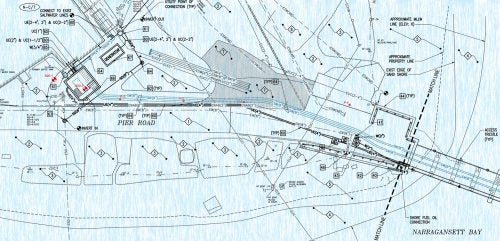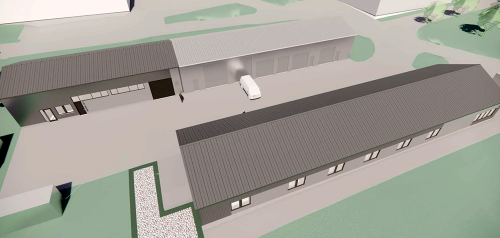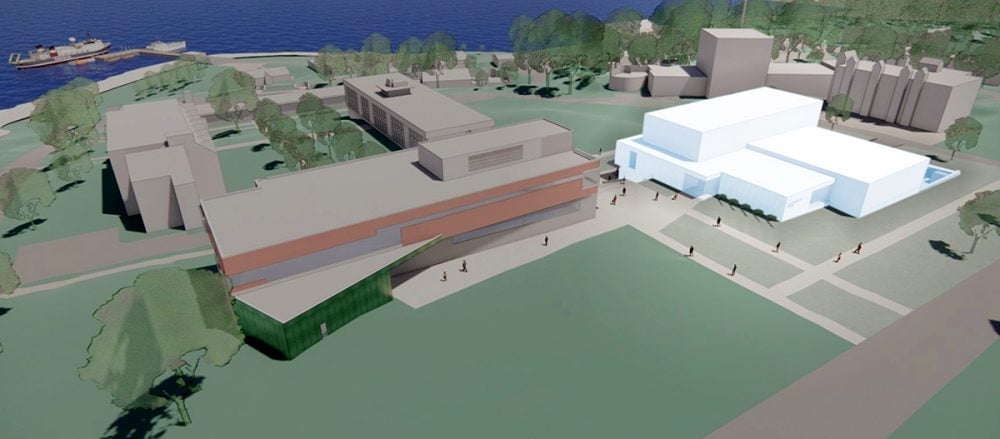The first three projects answer the need for facilities that will best serve the new Regional Class Research Vessel upon its arrival in 2024, and make optimal use of its advanced capabilities. Funding for these projects has already been received and/or approved and construction has begun.
Projects in Phase One
Research Vessel Pier

GSO’s original pier was built in 1963. After more than 60 years, the wooden structure was at the end of its service life. Further, planners understood it would not meet the needs of the new research vessel, Narragansett Dawn. The most practical solution was to replace the wooden pier with a larger, steel-and-concrete pier. Due to forecasts for rising sea level, the decks of the new 200-foot pier and approach road are about five feet above previous elevations. As part of the pier project, the original pump house that brings seawater to campus labs was also replaced. The new pump house has been relocated further uphill, adjacent to the Blount Aquaculture Building.
Marine Operations Facility

Design development has been completed. The project will upgrade marine operations with a new building and create an annex to the Marine Logistics Building. The “Marine Ops Building” will contain offices and meeting spaces for staff of the Marine Operations department, as well as a classroom, locker rooms, equipment and storage for URI’s Diving Safety & Research Program. Inside the “MLB-Annex” are three workshops (machine shop, wood shop and clean shop) and a staging area for ship’s cargo and support spaces. When built, the new structures add about 11,000 square feet of space.
Ocean Robotics Laboratory

Sited at the top of the campus next to OSEC, this new building will be a prominent outcome of campus-renewal efforts. Years of program planning, design development and construction preparation have been devoted to the details of this next-generation laboratory. Groundbreaking on the 27,000-square-foot building is scheduled for Summer 2023. The Ocean Robotics Laboratory will be a hub of innovation and collaboration in a technologically-driven era of ocean exploration and research. To research and build new ocean-going devices, unique components of the lab include a 5,000-square-foot, high-bay staging area, a large test tank, two workshops, eight primary labs, eight secondary labs and an incubator suite.
